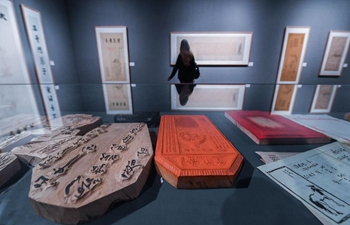
Photo taken by the unmanned submersible Haima shows a joint deep-sea work in a cold seep area in the South China Sea. China has carried out deep-sea research with two submersibles to explore a cold seep in the South China Sea, according to a statement released by the China Geological Survey's Guangzhou branch Wednesday. It is the first time two domestically-made deep-sea submersibles, the unmanned submersible Haima (Seahorse) and manned submersible Shenhai Yongshi (Deep Sea Warrior), have been used in a single scientific expedition. (Xinhua)
GUANGZHOU, May 2 (Xinhua) -- China has carried out deep-sea research with two submersibles to explore a cold seep in the South China Sea, according to a statement released by the China Geological Survey's Guangzhou branch Wednesday.
It is the first time two domestically-made deep-sea submersibles, the unmanned submersible Haima (Seahorse) and manned submersible Shenhai Yongshi (Deep Sea Warrior), have been used in a single scientific expedition.
The expedition in the Haima Cold Seep area in the Pearl River mouth basin in the South China Sea was carried out between April 28 and 30 by the research vessel Hai Yang Liu Hao (Ocean Six) and Tan Suo Yi Hao (Discovery One), which carry Haima and Shenhai Yongshi respectively, the statement said.
A cold seep is an area of the ocean floor where hydrogen sulfide, methane and other hydrocarbon-rich fluid seepage occurs. Research at the Haima cold seep will provide information on the formation of natural gas hydrate reservoirs, the ecosystems of cold seeps and the origins of life on earth.
The two submersibles conducted three dives together to reach the cold seep. Haima took samples from and explored the cold seep by making use of multiple tools, such as a side scan sonar, methane sensor and trap for undersea creatures.















